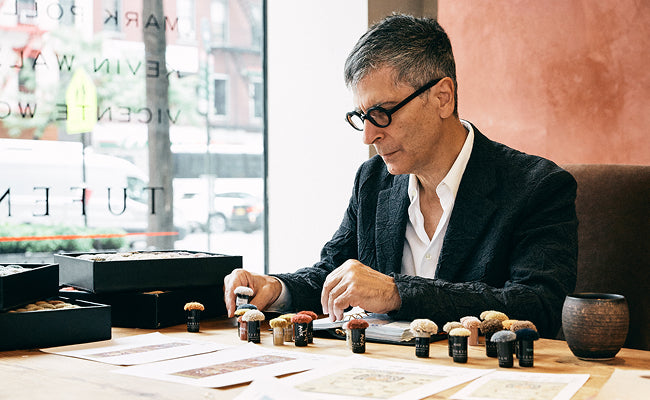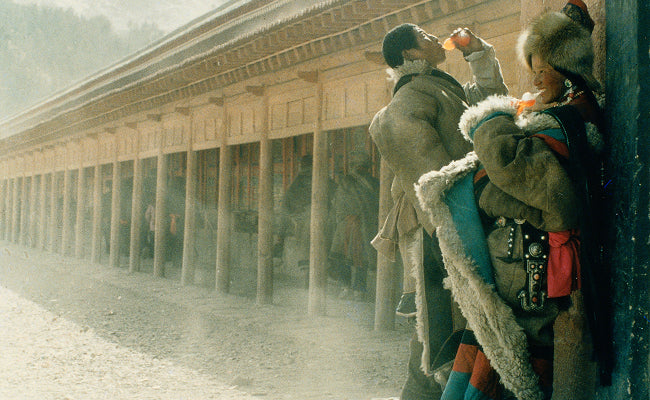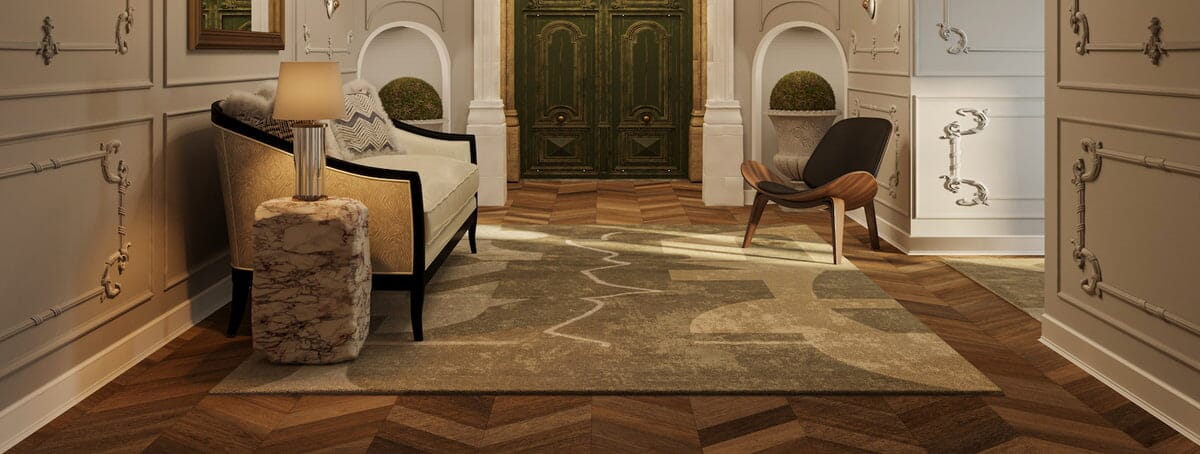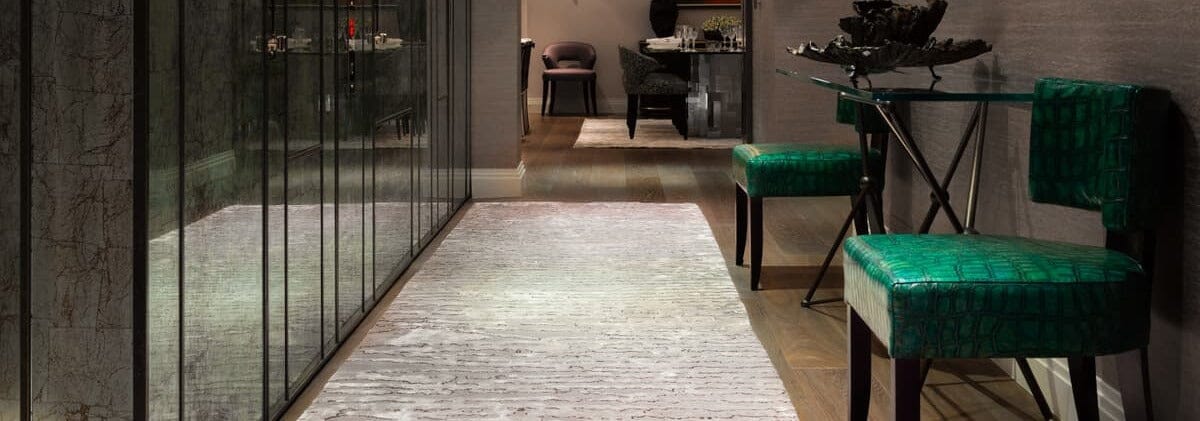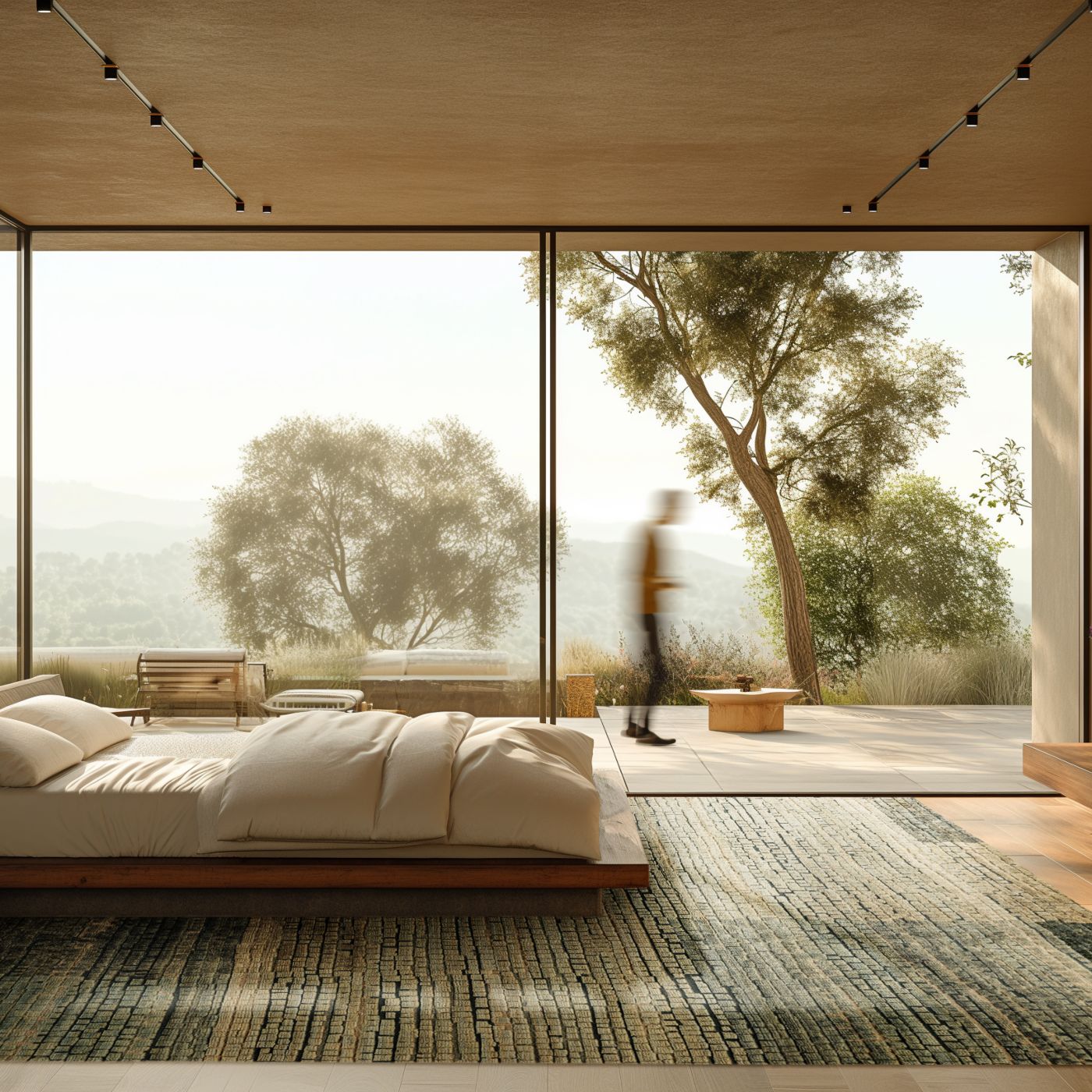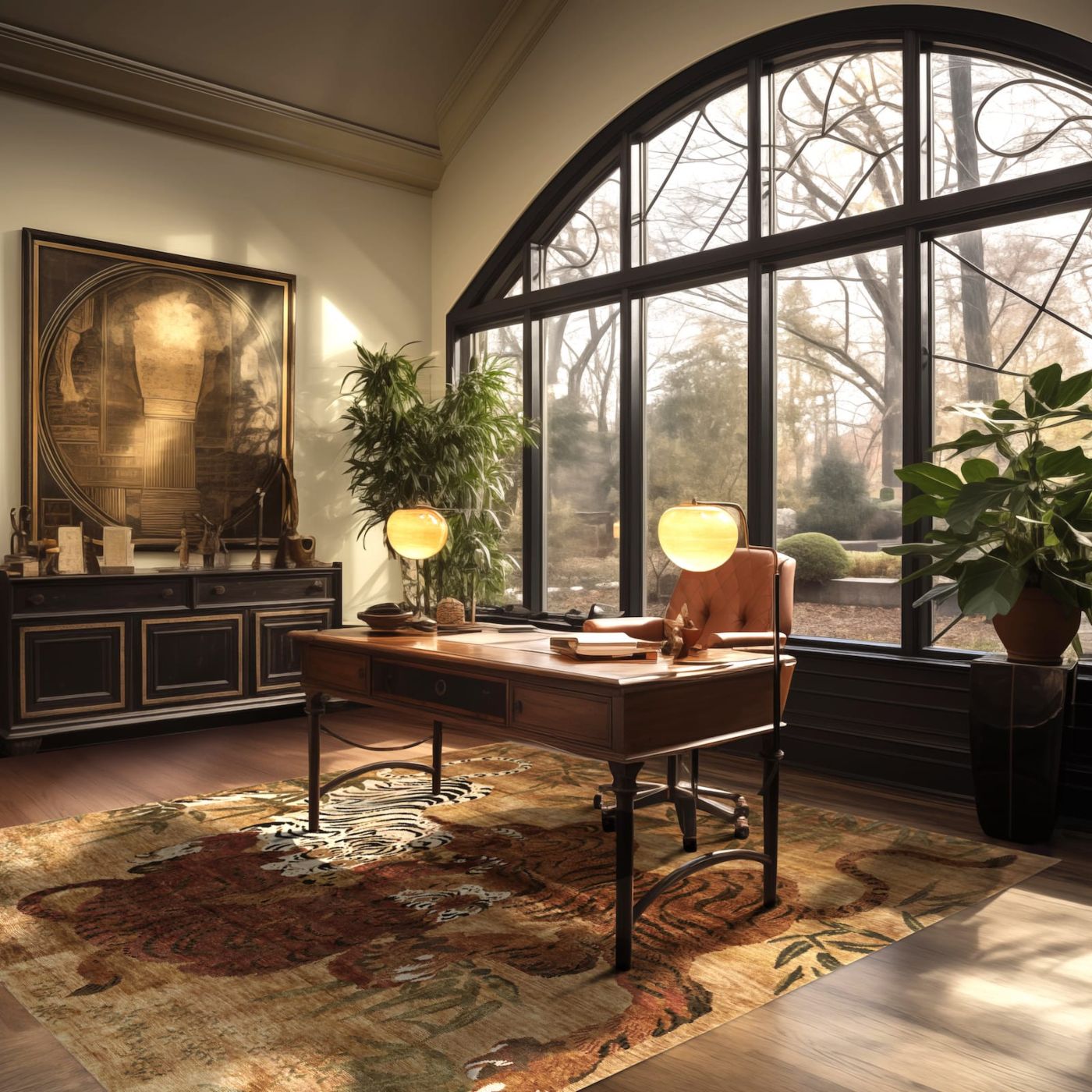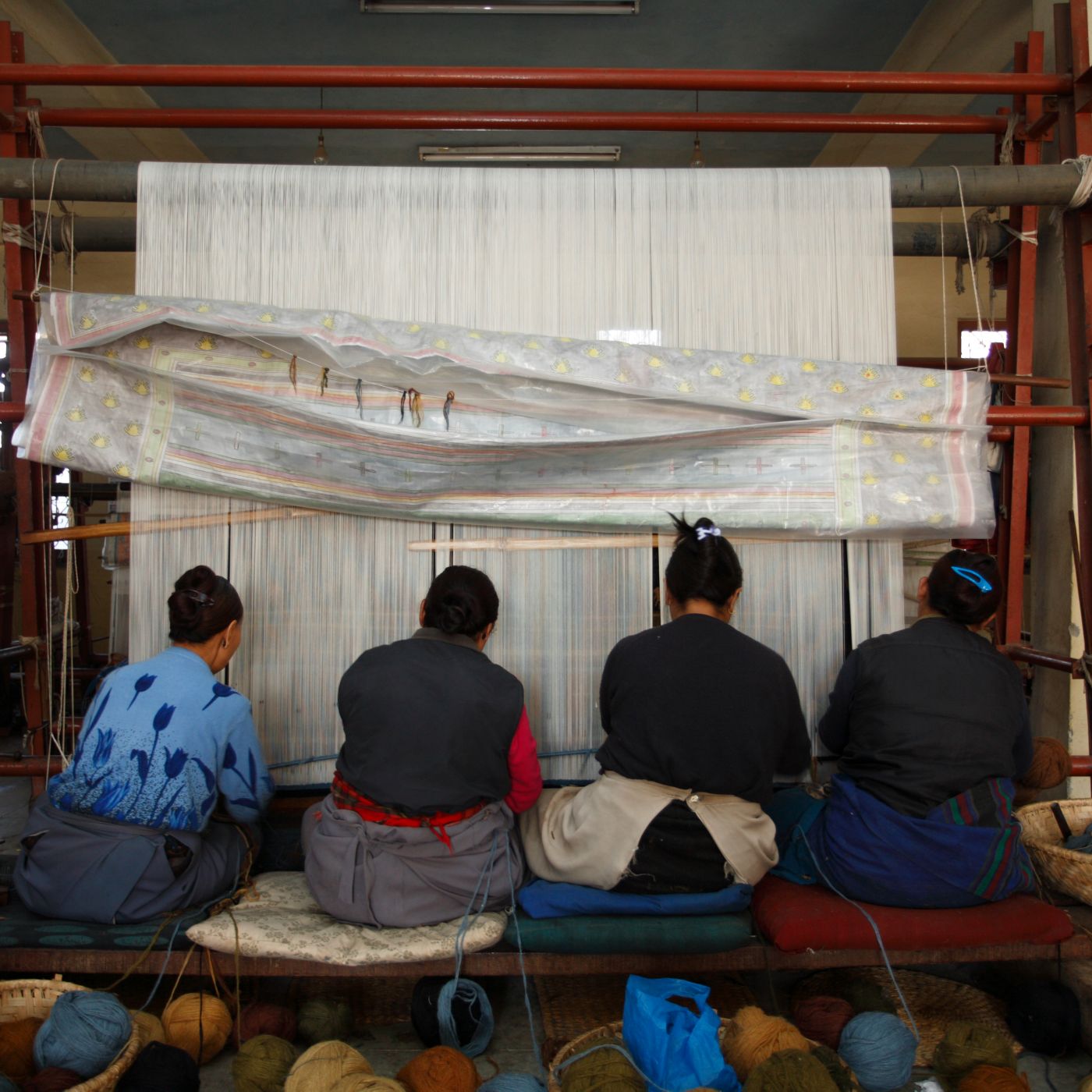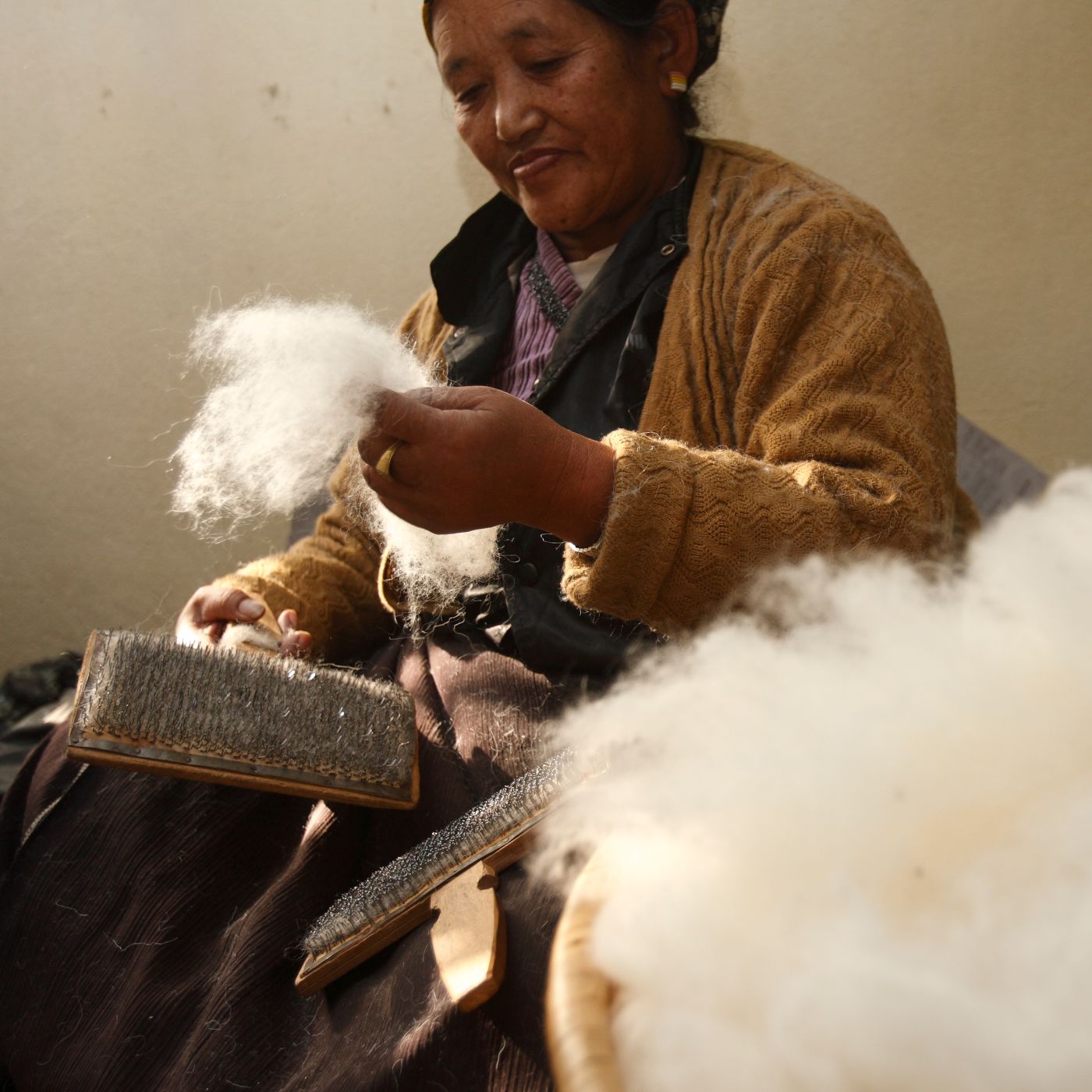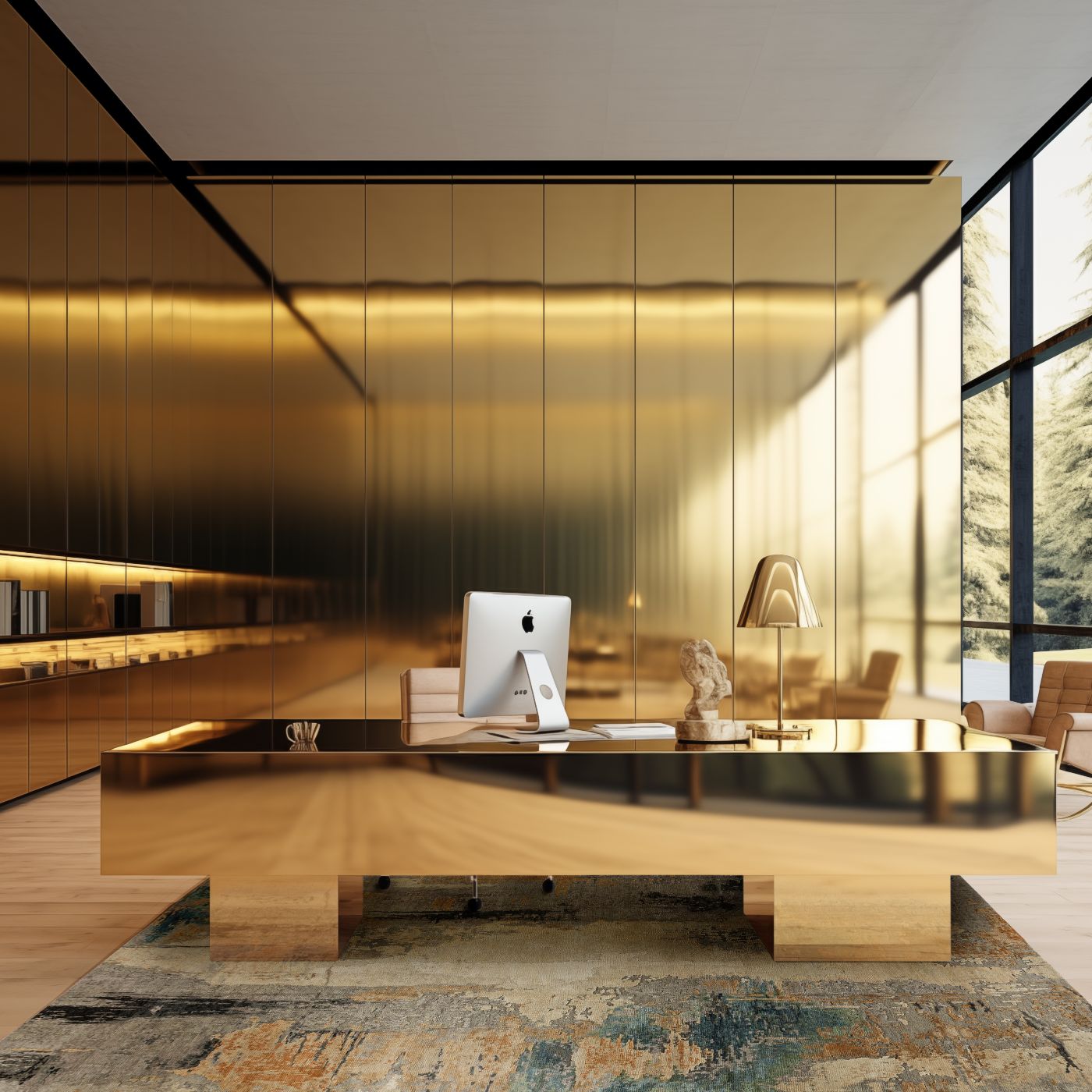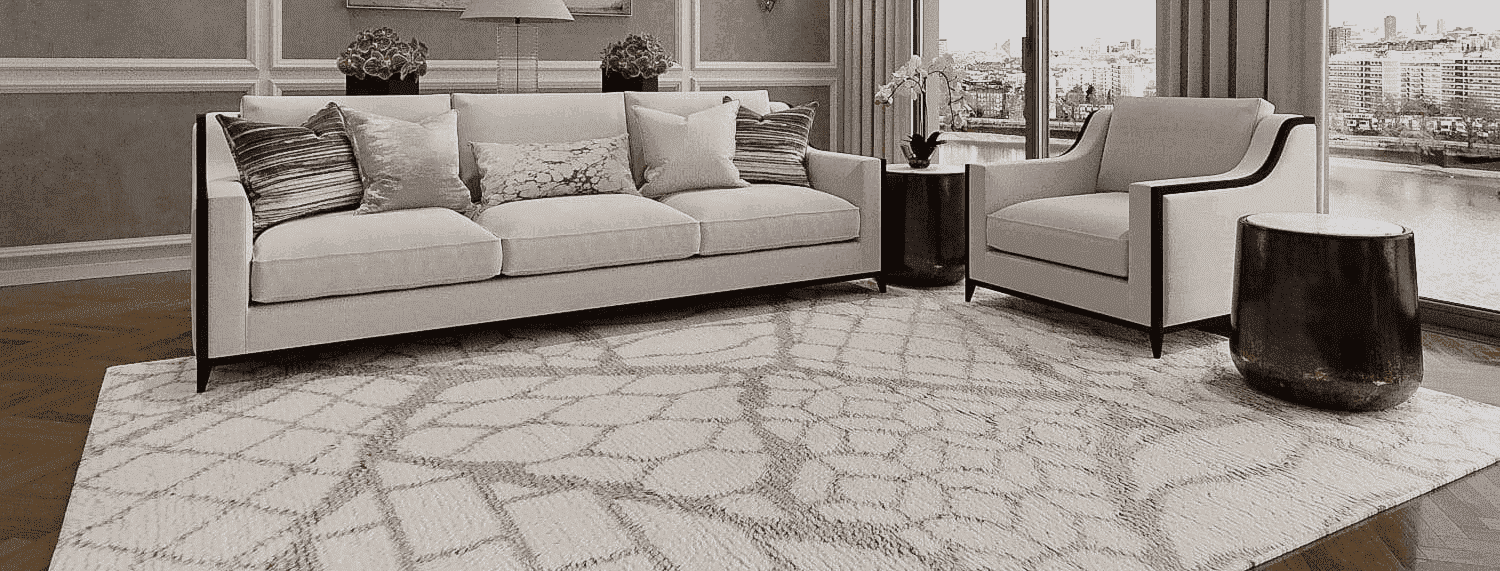
A Comprehensive Guide to Handmade Moroccan Rugs
Moroccan style is a celebration of richness, vibrancy, intricacy, and cultural diversity. Drawing influences from Islamic, Spanish, and French cultures, Moroccan rugs epitomize the beauty of natural organics and the artistry of hand craftsmanship. Each rug, crafted with passion, becomes a vibrant storyteller in its own right, breathing life into the spaces it inhabits.
Every Moroccan and Moroccan-style rug connects to the traditions and narratives of North African artistry. Discover how these rugs bridge beauty and heritage, form and function wherever they dwell, and learn everything you need to find the perfect Moroccan rug for your space.
The History and Symbolism Behind Moroccan Rugs
Moroccan rugs are a testament to a mesmerizing culture, where vibrant colors and intricate patterns become a visual language for stories that span centuries. These rugs embody the artistic influence of indigenous Berber tribes, mirroring the interactions between the various cultures of Morocco. As nomadic communities traveled the Atlas Mountains, these rugs served as saddle blankets, bed coverings, sleeping mats, and items for warmth and decoration.
Spirituality and Symbolism
Many Moroccan rug motifs carry symbolic meanings that represent protection, fertility, and prosperity. The weaving process has long been regarded as a spiritual journey for the weaver, acting as a meditation connecting them with the natural and spirit worlds. The instruments, designs, and weaving techniques were considered sacred, carrying deep meaning for the weaver.
This spiritual connection powerfully informed the design and construction of Moroccan rugs. Early motifs, still popular design elements today, were incorporated as forms of protection to ward off malignant spirits. To further serve its protective presence, the edges of the rug were often burned to keep it and its owners safe from predatory spirits.
Materials and Construction
Originally woven by women and always by hand, Moroccan rugs connected Berber tribes with the broader world. Meticulously hand spun wool was dyed with time-honored recipes crafted from ingredients such as fruit, spices, and local minerals. This process contributes to the art form’s rich heritage, as many of these dye recipes are passed down from generation to generation still today.
Authentic Moroccan rugs remain true to their traditions. However, the significance of Moroccan heritage persists in the hand woven Moroccan-style rugs crafted by Tufenkian. These rugs can possess the same spirited connection and resonance with the legacy of artisanship and symbolism that set Moroccan rugs apart in the rug-weaving world.
Moroccan Rug Styles
In the diverse landscape of Moroccan rugs, each style represents a chapter in the narrative of Berber culture.
Beni Ourain Rugs
Beni Ourain rugs are the pinnacle of Moroccan artisanship, known for their long pile and distinctive monochromatic geometric patterns. Originating from the Atlas Mountains, these rugs are traditionally woven by Beni Ourain tribes and reflect their nomadic lifestyle and cultural symbols. These rugs typically feature ivory, gray, and brown hues but can include some color in certain varieties.
Azilal Rugs
With a burst of vibrant colors and abstract patterns, Azilal rugs tell unique stories through asymmetrical designs, demonstrating the individual weaver’s expression and the influence of their surroundings. Berber women in the Azilal region traditionally used natural dyed yarn woven through undyed wool backgrounds to create visual contrast.
Boucherouite Rugs
Boucherouite rugs, also known as “rag rugs,” symbolize Moroccan resourcefulness and creativity. These rugs were traditionally crafted from recycled materials, including fabric scraps, and embrace a multitude of colors and patterns. Boucherouite rugs blend bold colors with abstract designs and varied textures for eye-catching pieces that reflect an artistic approach to rug weaving.
Kilim Rugs
While not exclusive to Morocco, Kilim rugs hold a significant place in the landscape and history of the region. Woven with a flat, tapestry-like technique, Kilim rugs feature bold, geometric designs and vibrant colors, showcasing the fusion of Moroccan aesthetics and the art of Kilim weaving.
Boujad Rugs
Boujad rugs originate from the Haouz region and are renowned for their intricate and expressive designs. Striking reds, pinks, and oranges often feature prominently. Each Boujad rug is a unique woven creation that captures the spirit and individuality of its weaver. Warm and vibrant, these rugs are thoughtful in their design and construction.
Mohair Moroccan Collection by Tufenkian
Tufenkian’s take on Moroccan style rugs offer an inviting shag-like texture evocative of the weaving traditions of the Atlas Mountains. New production composed of sophisticated design and modern, neutral color palettes make these the ideal in casual elegance for today’s contemporary home. Purposeful hand-finishing enhances the natural luster of these wool and mohair rugs for a beautiful sheen and also results in much-reduced shedding common with Moroccan rugs.
The Moroccan Rug-Weaving Process
The process of weaving a Moroccan rug is a balance of creativity and artisanship, where each step contributes to the rug’s cultural significance and artistic polish. From the initial design to the final knot, the process weaves stories into the very fabric of these creations.
1. Pattern and Design Conception
Rooted in centuries-old traditions, Moroccan-style rugs feature distinctive patterns and designs that span a diverse spectrum. From the geometric elegance of Beni Ourain rugs to the free-spiritedness of Boucherouite, each design conveys tribal identity, narrates stories, or infuses symbols that lay the blueprint for the rug’s visual narrative.
2. Material Selection and Preparation
Choosing the right material is paramount. Local sheep provide the wool, prized for its durability and softness, which is spun by hand to form the foundational yarn for these rugs. Traditionally, Moroccan rug weavers may have incorporated silk or cotton to enhance the texture. The raw materials and preparation method are responsible for the diverse textures found in Moroccan rugs, as the hand-spun wool yarn is prepared in various sizes, thicknesses, and tightness in its fibers.
Tufenkian’s Moroccan production adds the luxe of handspun Mohair to their rugs, for an incredible soft finish unmatched by pure wool or other wool blends.
3. Dyeing Process
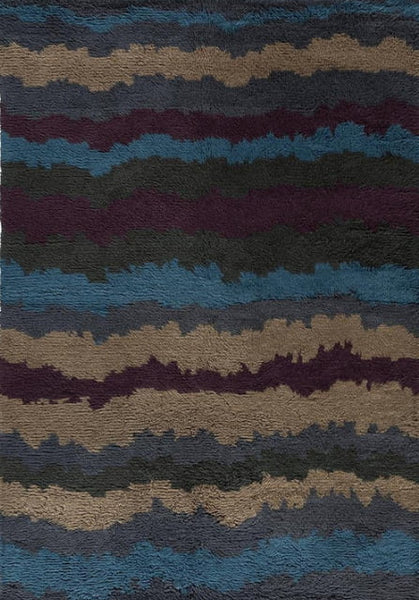
The dyeing process is an art in itself. Locally sourced ingredients such as spices, minerals, and fruits create vibrant dyes that transform the raw wool into multi-colored skeins. This step is where the wool takes up various hues that captivate the eye and make it possible for the weaver to tell stories in the rug. Neutral designs may not be dyed at all, but selected for tone based on the natural wool color.
4. Knotting Technique
Moroccan rugs typically use the traditional Berber knot, a meticulous hand knotting method that contributes to the plush, high-pile texture. Rug weavers may use variations of this knot, as well as other techniques such as the Ghiordes knot, each adding a layer of complexity and character to these hand knotted rugs.
5. Finishing Touches
As the weaving nears completion, the weaver trims excess fibers, secures the knots, and inspects the rug for resilience and consistency. This is where weavers may burn the edges of the rug or refine any additional tassels or fringe elements.
How to Judge the Quality of Moroccan Rugs
Assessing the quality of a Moroccan-style rug involves an appreciation for the authenticity of its materials, its artisanship, and the enduring vibrancy of its colors. These benchmarks serve as a guide to discern the true artistry and longevity of these rugs.
Materials Used

The hallmark of a high-quality Moroccan rug is its materials. Genuine Moroccan and Moroccan-style rugs are crafted from premium wool to ensure durability, softness, and an authentic feel underfoot. The choice of materials, from the quality of the wool to its origins, contributes to the rug’s texture and overall quality. The use of luxe materials such as Mohair may add to the value and the cost of a rug.
Hand Woven Artisanship
A key indicator of authenticity and quality lies in the rug’s creation. Quality Moroccan rugs are meticulously hand woven, knot by knot, by skilled artisans. These rugs feature charming irregularities in the weave and subtle variations in pattern, which serve as signs of the human touch. These elements make each rug a work of art.
Colorfastness
The vibrancy of Moroccan-style rug colors should be striking and enduring. Colorfastness is a crucial quality criterion. This ensures that the rich hues withstand the test of time and exposure to light. A high-quality Moroccan rug maintains its brilliance without fading to preserve its intricate patterns.
Moroccan Rug FAQ

These answers to common questions about Moroccan rugs provide insights into the distinctive features, care, and characteristics of these rugs.
What is special about Moroccan rugs?
Moroccan rugs are renowned for their unique combination of artistry, craftsmanship, and cultural symbolism. These rugs tell a story that encapsulates the heritage and creativity of the Berber tribes. Their patterns are not merely decorative, but they carry cultural significance that can be unique to specific tribes or regions.
Crafted from natural materials, these durable rugs seamlessly blend with various styles. The timeless nature of Moroccan-style rugs is evident in their enduring popularity, as they not only withstand changing design trends but become even more cherished over time as unique and beautiful works of art.
Many people love them for their unique pile height, which is often compared to a shag carpet. This pile height creates a cozy aesthetic and is a joy to walk on. This also means these rugs are not appropriate for high-traffic areas. Homeowners with pets and young children may also want to consider if this rug can be maintained with their lifestyle.
Why are Moroccan rugs so expensive?
The price of a Moroccan rug reflects the intricate artisanship, premium materials, and heritage embedded in each piece, as they’re made meticulously by hand through thousands, and often millions, of hand-tied knots across the surface.
Tufenkian Moroccan-style rugs are all hand knotted with materials produced by hand. This gives the wool a lustrous appearance that can only be obtained by human hands. These processes are impossible to replicate with machine intervention. Authenticity and the labor-intensive process contribute to their value.
What are Moroccan rugs called?
Moroccan rugs, particularly those crafted by Berber tribes, are often referred to as Berber rugs. This nomenclature highlights their origins and the traditional weaving techniques employed by indigenous Berber communities. The term Berber is derived from the indigenous North African tribe with a rich history of rug-making dating back millennia.
How do I identify a Moroccan rug?
Authentic Moroccan rugs typically feature geometric patterns, vibrant colors, and, upon closer inspection, wonderful irregularities in the weave. Hand knotted artisanship and distinct cultural motifs are key identifiers. Authentic Moroccan rugs are also made from 100% wool, which demonstrate a beautiful sheen and soft feel underfoot, and are usually left with a very high pile.
How long do Moroccan rugs last?
Well-maintained rugs crafted from exceptional materials can last for decades. This hinges on whether they undergo adequate maintenance and regular cleanings and where they are placed in your space. The lifespan of a Moroccan-style rug depends on factors such as material quality, usage, and care.
Can you wash Moroccan rugs?
Thorough washing of Moroccan rugs is best left to professionals. Consult care instructions or seek professional cleaning services if your rug requires a deep clean. Moroccan-style rugs are best kept in excellent condition through spot cleaning, as handwoven rugs can lose their shape or color if not properly cleaned. It’s helpful to clean a rug at least once per year to maintain it.
How do you vacuum a Moroccan rug?
Gentle vacuuming is best. Use a low-suction vacuum or turn off the beater brush to prevent damage to the rug’s fibers. Always vacuum in the direction of the pile and avoid excessive pressure to preserve the rug’s texture and integrity.
How do you brush a Moroccan rug?
Gently brush a Moroccan-style rug with a soft-bristle brush to maintain its texture. Be sure to brush in the direction of the pile and avoid vigorous movements to prevent damage to the delicate fibers. This can remove dust, debris, and loose fibers and help keep the rug in good condition.
How do I stop my Moroccan rug from shedding?
Moroccan rugs may shed fibers, often many at first, which is normal and expected for these rugs. Regular vacuuming should help the shedding to diminish over time. Excessing pulling, rubbing, or disturbance of the fibers can contribute to shedding and should be avoided.
While Moroccan rugs are prone to shedding and will often continue to shed throughout their life, Tufenkian Moroccan-style rugs are all hand knotted with materials superior to the wool traditionally used. This helps to ensure significantly less shedding, which typically only lasts a short time as the rug settles.
How to Style a Moroccan Rug
The distinct allure of Moroccan-style rugs comes through in their rich colors, intriguing patterns, and cultural resonance. Here’s how to work with their unique characteristics to elevate their inherent charisma and foster harmonious interior design.
1. Embrace Eclecticism
Moroccan rugs thrive in settings that derive style from a diverse range of design sources. Mix and match furniture pieces in different styles, such as mid-century modern or transitional styles, to contribute to a visually dynamic space. The vibrant patterns of the rug harmonize fluidly with varied aesthetics.
2. Infuse Cultural Elements
Let your Moroccan-style rug serve as a cultural ambassador for your space. Include Moroccan-inspired pieces such as poufs, wall art, and lanterns in the room to complement the design elements in the rug and create a cohesive theme that resonates with the rug’s origins.
3. Thoughtfully Choose Furniture

Moroccan rugs shine when paired with low-slung furniture and pieces with a profile around five inches lower than typical. Consider placing your rug beneath a coffee table or arranging your seating area with pieces closer to the floor. This showcases the rug’s beauty and aligns with traditional Moroccan seating arrangements.
4. Contrast and Complement Colors
Balance is essential with Moroccan-style rugs. If your rug boasts vibrant colors, opting for furniture and decor in neutral tones is often ideal to establish harmonious contrast. Conversely, a neutral-toned rug invites the opportunity to play with bold and colorful decor.
5. Layer Textures
Moroccan rugs often work best in the company of other textiles, especially on the floor. Layer your rug over larger, neutral-toned carpets to enhance its prominence in the room. This adds depth but can also make a more modest-sized rug work in a larger room. Layering also helps accentuate the patterns of Moroccan-style rugs with well-chosen base rugs.
Elevate Your Space with Moroccan Rugs

Moroccan rugs are artistic masterpieces, symbols of a rich and diverse heritage, and a versatile piece of design that can anchor any room and enhance its aesthetic appeal. Within our collection of hand knotted rugs are meticulously crafted, beautiful Moroccan-style rugs that speak to diverse tastes and design preferences.
Explore our collection of Moroccan-style rugs and introduce the exquisite touch of a Tufenkian rug into your home.
Speak with our rug ambassadors or visit a showroom to Test Drive an extremely handmade Moroccan-style rug today.


